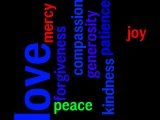Readings: Acts 10:34-43; Col 3:1-4; Jn 20:1-9
Many things have changed in the Catholic Church over the last fifty years. Most of them were initiated by the Second Vatican Council, whose fiftieth anniversary of opening will be celebrated later this year. One of those changed items concerns the feast of Easter. When I was growing up, Easter Sunday was primarily known as the end of Lent and the time when we could begin to eat candy again. It was also the occasion for Easter egg hunts and the chance to wear one’s new spring clothes. If pressed to provide a religious meaning for Easter Sunday, we would likely retreat to the Baltimore Catechism explanation (provided we remembered it) and say that Easter proved definitively that Jesus was God. If you hadn’t come to that conclusion already by the many miracles in his life, then the Resurrection was certainly the clincher. Jesus most surely had to be God.
However, in the 1950s and 60s the forces were already underway that would effect an extensive broadening and deepening of the understanding of Easter. For almost a century before Catholic scholars had been recovering aspects and dimensions of early Christian belief and practice that had been forgotten in intervening centuries. No book was more significant than Fr. F.X. Durrwell’s The Resurrection, published in 1960. Fr. Durrwell showed very clearly from scriptural and patristic evidence that the Resurrection of Jesus was part of a complex of acts—passion, death and resurrection—that together were called the Paschal Mystery. And that Paschal Mystery constitutes the very heart of our redemption and salvation. That understanding swirled in the air when the Second Vatican Council opened in 1962. The Council Fathers would eventually write that meaning into the "Constitution on the Sacred Liturgy." That document clearly affirms that the Paschal Mystery forms the very center of the Christian faith. The Paschal Mystery is what is celebrated in every Eucharist. The most solemn celebration of the Paschal Mystery occurs in the feast of Easter, which is the highest of all feasts and the center of the Liturgical Year.
The Paschal Mystery is the origin, core and exemplar of what it means to be a Christian. What makes us "Christians" is that ultimately we believe that God raised Jesus from death to life and in that action began a new religious vision. The Resurrection of Jesus is believed to be a new act of God; this raising of Jesus means that he now lives in an entirely new mode of existence. This is a passing into (passover) a new and glorified existence, an existence beyond our world at the very right hand of God. This act of God has resulted in the beginning of a new spiritual age. For those who believe in Jesus will also be transformed by the same power that changed Jesus, by God the Father. The feast of Easter celebrates the very heart of our Catholic Christian faith.
In the 50 years since Vatican II the Catholic Church has been re-learning the great significance of Easter and the Resurrection. We can see this in a variety of ways. One of the most powerful has been the reception of the RCIA participants into full communion in the Church at the Easter Vigil. Another has been the development of new devotions like the Via Lucis, which is dedicated to the Resurrection appearances of Jesus and which now appears in all Vatican prayer books. Similarly, Pope John Paul II made the Sunday after Easter into Divine Mercy Sunday. This was to show the tremendous implications of the Resurrection for our lives; the Resurrection changed Jesus and all of us. Our Catholic Christian faith is a faith of God’s love and mercy. Let’s celebrate that today and always!
Sunday, April 8, 2012
Easter Sunday Homily by Fr. Matthias Neuman
Subscribe to:
Post Comments (Atom)





No comments:
Post a Comment